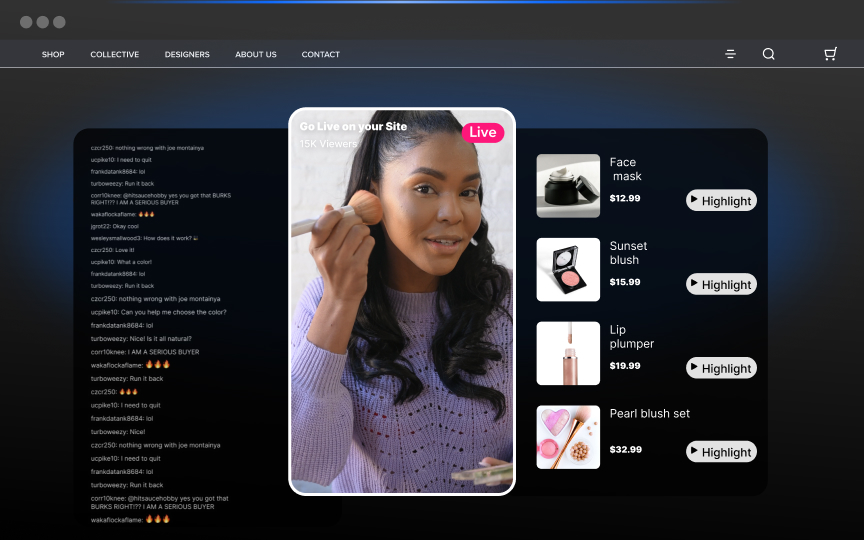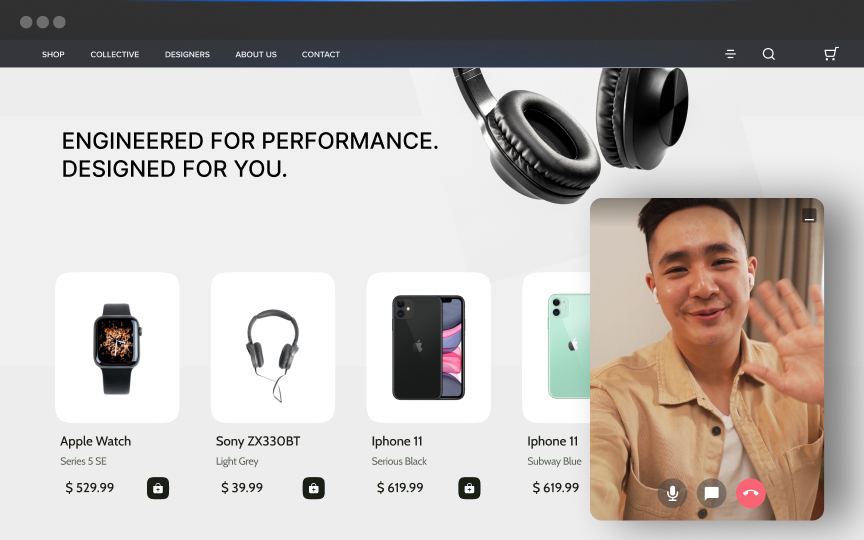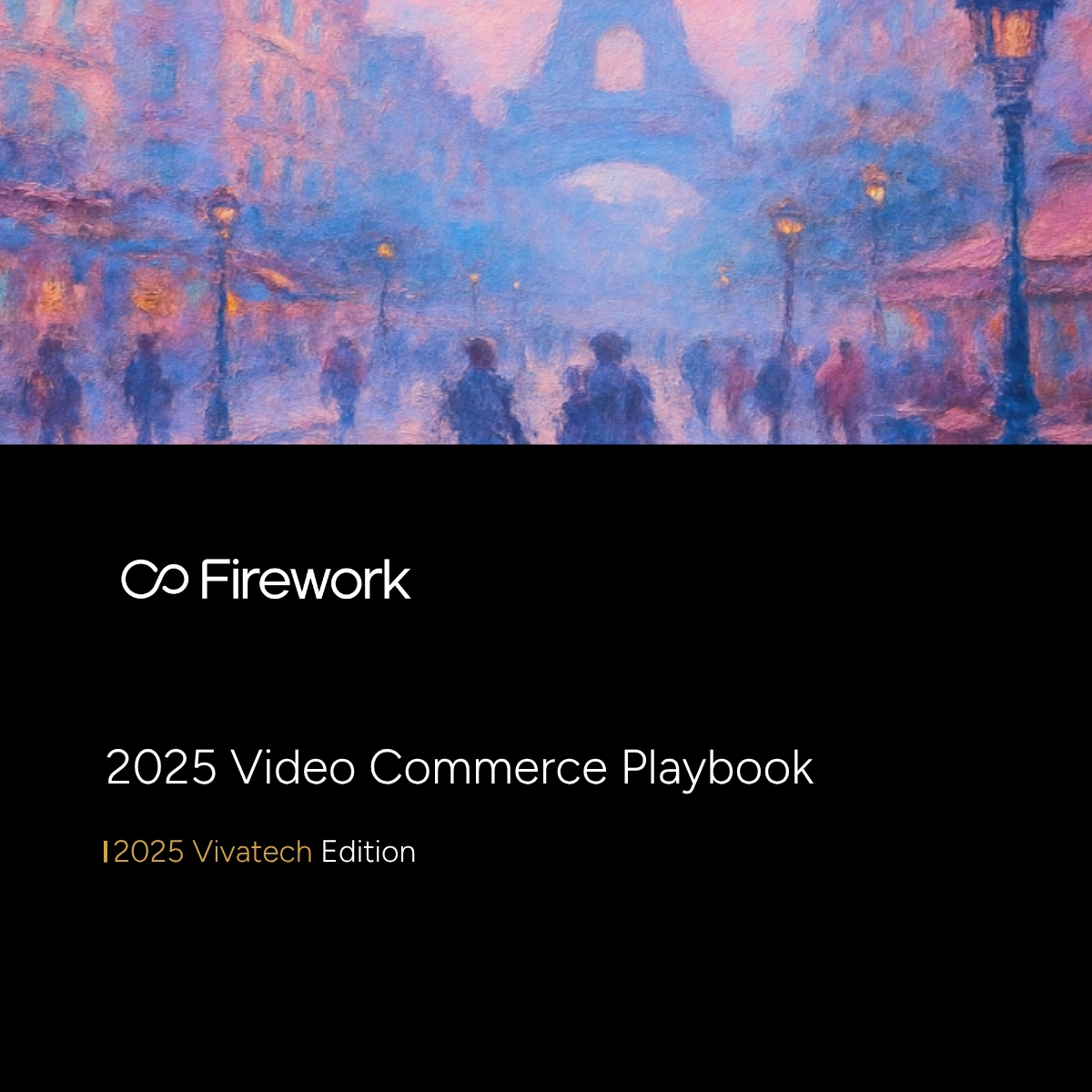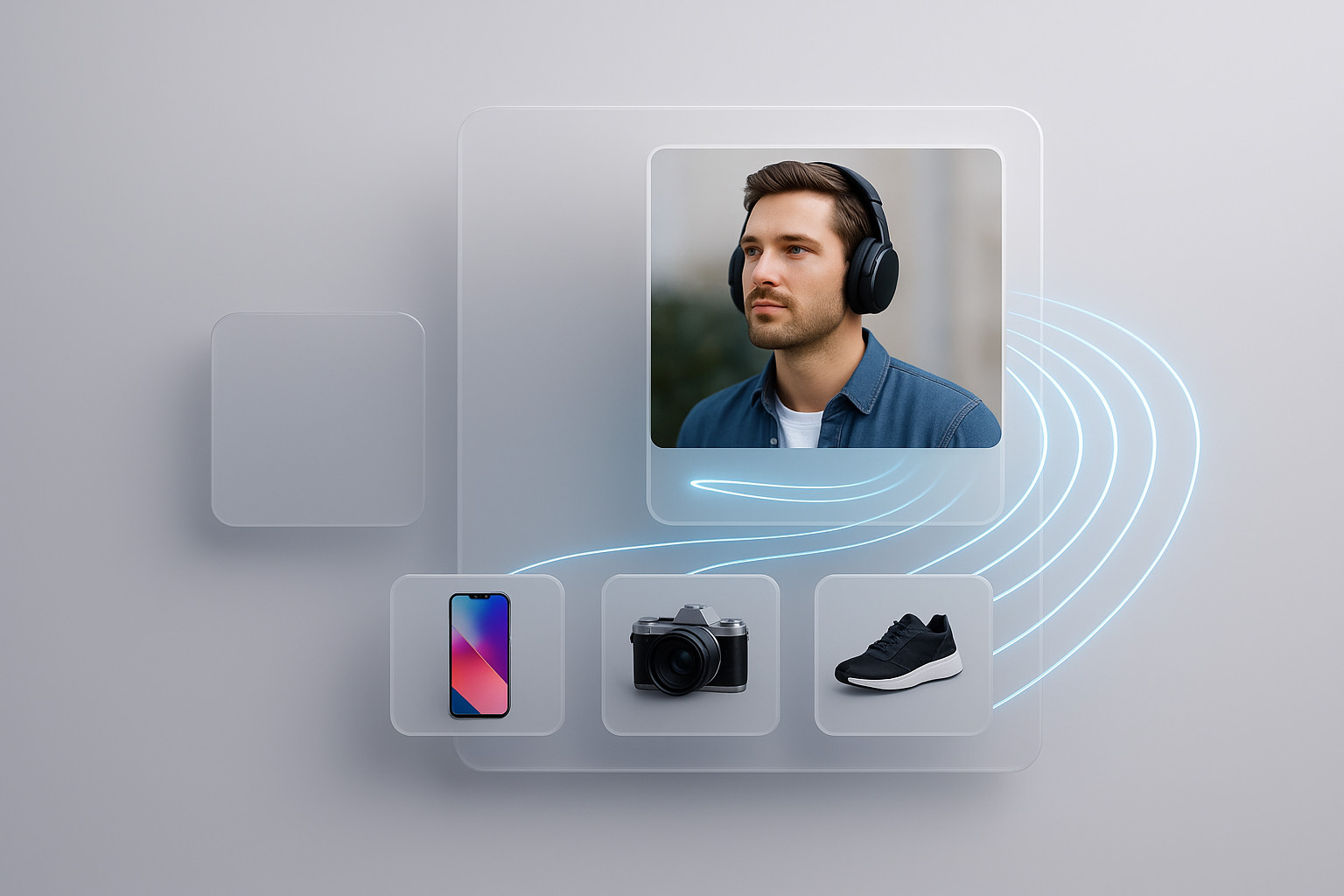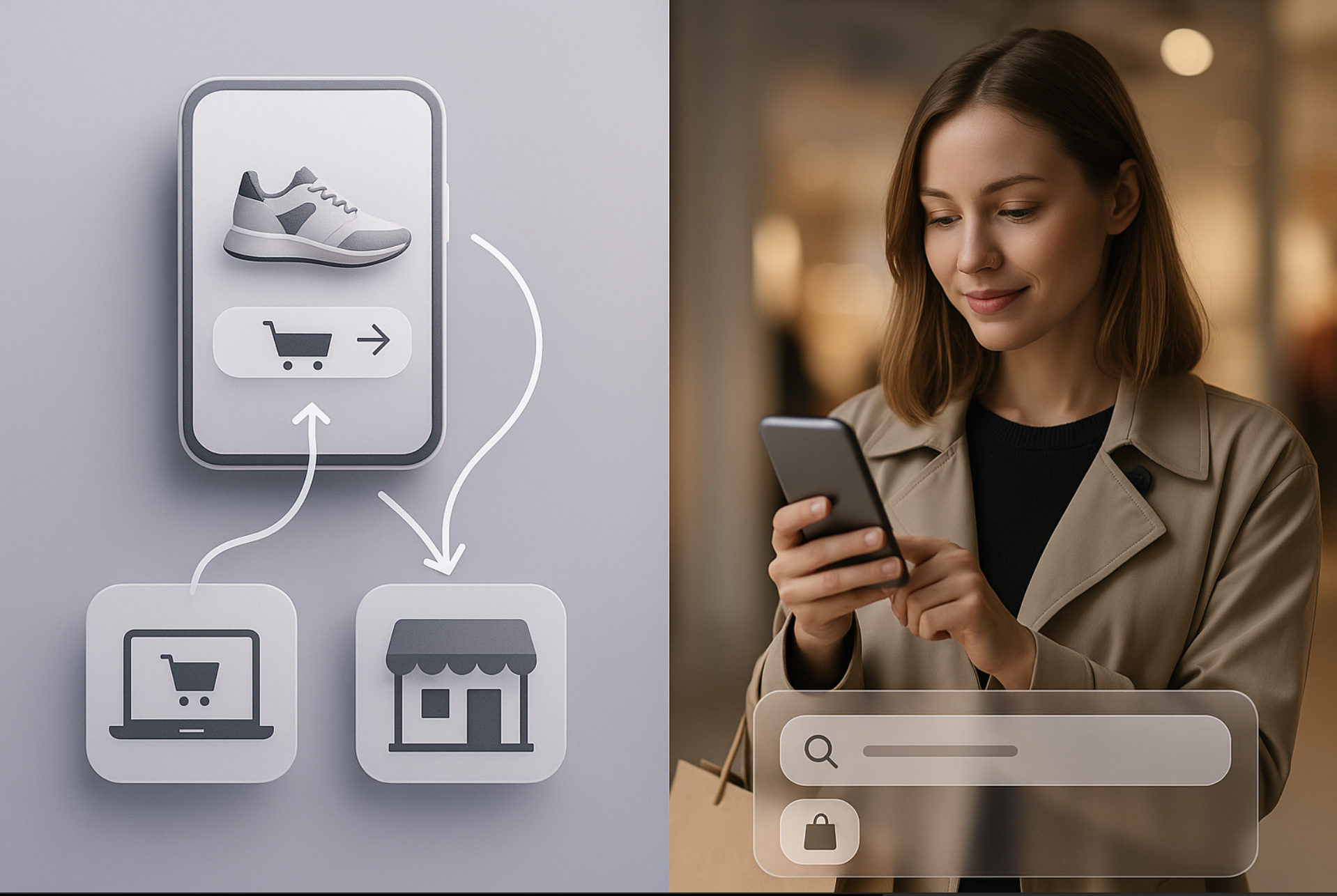You know the feeling when you find a beauty product that seems like it was made just for you? That’s the magic of ecommerce personalization.
Imagine logging into your favorite beauty site and seeing recommendations that fit your skin type, favorite colors, and even your past purchases. It’s like having a personal beauty consultant at your fingertips.
Let’s break down what ecommerce personalization for beauty brands really means and how it can transform your shopping experience.
What is Ecommerce Personalization for Beauty Brands?
Ecommerce personalization for beauty brands tailors online shopping experiences to individual customers based on their preferences, behaviors, and characteristics. This practice uses data and technology to deliver targeted product recommendations, content, and promotions. By analyzing your browsing history, purchase patterns, and even demographic information, beauty brands can create a shopping experience that feels uniquely yours.
Isn't it frustrating when you spend ages searching for the right beauty product? Personalized experiences can make this a thing of the past. To truly elevate this experience, consider how you can bring in-store experience online.
Benefits of Ecommerce Personalization for Beauty Brands
Increased Customer Engagement
Personalized experiences capture your attention and encourage you to interact more with the brand. Imagine logging into a beauty site and seeing products that match your skin type, favorite shades, and even your past purchases. This tailored approach makes you feel understood and valued, leading to more time spent exploring the site. Interactive elements like personalized beauty quizzes and customized tutorials further enhance engagement, making the shopping experience enjoyable and relevant to your needs.
Higher Conversion Rates
Tailored product recommendations and promotions drive you to make purchases. When a beauty brand suggests products based on your browsing history and previous buys, it feels like a personal shopping assistant guiding you. This targeted approach reduces the time you spend searching for the right product and increases the likelihood of you adding items to your cart. Special promotions and discounts that align with your preferences make it even more tempting to complete the purchase, boosting conversion rates significantly. Understanding customer behavior can greatly enhance these efforts, making your personalization strategies more effective. Learn more about understanding customer behavior.
Improved Customer Loyalty
Personalization fosters a sense of connection and appreciation, leading to repeat business. When a brand consistently offers you products and content that resonate with your tastes and needs, you develop a stronger bond with it. This connection makes you more likely to return for future purchases. Loyalty programs that offer personalized rewards and exclusive offers based on your shopping habits further enhance this relationship. The feeling of being valued and understood by the brand encourages you to stay loyal and continue shopping with them. To further improve customer loyalty, consider how video commerce can help increase repeat purchases.
Enhanced Customer Insights
Collecting data for personalization provides valuable insights into customer preferences and behaviors. Every interaction you have with a beauty brand's website, from the products you view to the items you purchase, generates data. Analyzing this data helps the brand understand your preferences, shopping habits, and even potential future needs. These insights enable the brand to refine its personalization strategies, ensuring that the content, recommendations, and promotions you receive are always relevant and timely. This continuous feedback loop not only improves your shopping experience but also helps the brand stay ahead of trends and meet customer expectations more effectively. Utilizing 1:1 customer experience platforms can significantly enhance these insights. Discover more about 1:1 customer experience.
Feeling overwhelmed by the sheer volume of beauty products out there? Personalization cuts through the clutter.
Types of Ecommerce Personalization for Beauty Brands
Product Recommendations
Product recommendations form the backbone of ecommerce personalization for beauty brands. By analyzing your browsing and purchase history, brands can suggest products that align with your specific needs and preferences. For instance, if you frequently purchase skincare products for dry skin, the website will prioritize recommending moisturizers, hydrating serums, and gentle cleansers tailored to your skin type. This approach not only saves you time but also enhances your shopping experience by presenting options that are most relevant to you.
Personalized Content
Personalized content goes beyond just product recommendations. It involves customizing the entire website experience to match your interests. This could mean featuring beauty tips, tutorials, and articles that align with your previous interactions and expressed preferences. For example, if you often explore content related to makeup tutorials, the website might highlight new makeup trends, step-by-step guides, and product reviews that cater to your interests. This ensures that the content you see is engaging and relevant, making your time on the site more enjoyable and informative. Enhancing ecommerce with video can significantly amplify the impact of personalized content. Learn more about enhancing ecommerce with video.
Targeted Promotions
Targeted promotions are another powerful aspect of ecommerce personalization. These promotions are designed to offer discounts and special deals that resonate with your shopping behavior and preferences. If you frequently purchase a particular brand or type of product, you might receive exclusive offers or discounts on those items. Additionally, if you have items in your cart or wishlist, targeted promotions can provide timely incentives to complete your purchase. This personalized approach to promotions not only increases the likelihood of a sale but also makes you feel valued as a customer.
Personalized Email Marketing
Personalized email marketing involves sending targeted email campaigns based on your interactions with the brand. These emails can include product recommendations, special offers, and content that align with your browsing history and purchase patterns. For example, if you recently bought a foundation, you might receive emails suggesting complementary products like primers and setting sprays. Personalized email campaigns can also include reminders for items left in your cart, exclusive discounts for loyal customers, and updates on new product launches that match your interests. This targeted communication keeps you engaged with the brand and encourages repeat purchases. Video commerce can significantly enhance engagement in personalized email marketing. Explore how video commerce for beauty brands can transform your strategy.
Confused about how all this personalization magic works? Let’s dive into the nitty-gritty.
How Does Ecommerce Personalization Work for Beauty Brands?
Ecommerce personalization for beauty brands starts with collecting and analyzing customer data. This data includes browsing behavior, purchase history, and demographic information. When you visit a beauty website, every click, view, and purchase adds to a profile that helps the brand understand your preferences and needs.
Artificial intelligence (AI) and machine learning (ML) algorithms play a significant role in processing this data. These technologies sift through the vast amounts of information to identify patterns and preferences. For example, suppose you frequently search for anti-aging products and have purchased serums in the past. In that case, the algorithms recognize this trend and predict that you might be interested in similar products. Learn more about AI-driven personalization and how it can enhance your ecommerce strategy.
The insights gained from this data analysis are then used to deliver personalized experiences in real-time. When you log into your favorite beauty site, you might see product recommendations that align with your past purchases or content that matches your interests. If you’ve shown a preference for cruelty-free products, the website might highlight new cruelty-free arrivals or offer promotions on these items.
Real-time personalization means that the website adapts to your actions as you browse. If you add a product to your cart but don’t complete the purchase, you might receive a reminder or a special offer to encourage you to finalize the transaction. This dynamic approach ensures that your shopping experience feels tailored and relevant, making it more likely that you’ll find what you’re looking for and make a purchase.
Wondering how top beauty brands are nailing personalization? Check these out.
Examples of Ecommerce Personalization in the Beauty Industry
Sephora's Beauty Insider program stands out as a prime example of effective ecommerce personalization. This program tailors product recommendations and exclusive rewards based on your purchase history and preferences. When you shop at Sephora, the Beauty Insider program tracks your buying habits and uses this data to suggest products that align with your interests. For instance, if you frequently purchase skincare items, the program will highlight new skincare products and offer rewards like early access to sales or special discounts on your favorite brands. This personalized approach not only enhances your shopping experience but also encourages you to engage more with the brand.
Glossier takes a different but equally effective approach to personalization. Their website features user-generated content and product reviews that are tailored to your skin type and concerns. When you browse Glossier's site, you’ll find reviews and photos from customers who share similar skin characteristics. This helps you make informed decisions about which products might work best for you. For example, if you have sensitive skin, you’ll see reviews from other users with sensitive skin, detailing their experiences with Glossier products. This level of personalization builds trust and makes you feel more confident in your purchases.
Another example is the way beauty brands use personalized email marketing to engage with you. After you make a purchase or browse certain products, you might receive emails with recommendations based on your activity. These emails can include special offers, new product launches, or tips on how to use the products you’ve shown interest in. This targeted communication keeps you connected to the brand and encourages repeat purchases. To see how live commerce can offer highly tailored experiences, check out this live commerce guide.
Personalized content is also a key component of ecommerce personalization in the beauty industry. Many beauty brands customize their website content to match your interests. For instance, if you often look for makeup tutorials, the website might feature articles and videos on the latest makeup trends, how-to guides, and product recommendations that suit your style. This makes your browsing experience more engaging and relevant, increasing the likelihood that you’ll spend more time on the site and make a purchase.
Lastly, targeted promotions play a significant role in ecommerce personalization. Beauty brands offer discounts and special offers tailored to your shopping behavior and preferences. If you frequently buy a particular brand or type of product, you might receive exclusive discounts on those items. Additionally, if you have items in your cart or wishlist, targeted promotions can provide timely incentives to complete your purchase. This approach not only boosts sales but also makes you feel valued as a customer. The power of AI in retail can significantly enhance these personalized experiences.
Feeling inspired to bring this level of personalization to your beauty brand? Here's how to get started.
How to Implement Ecommerce Personalization for Your Beauty Brand
Collect and Analyze Customer Data
Start by gathering data from various touchpoints. This includes tracking website interactions, such as the pages your customers visit, the products they view, and the time they spend on each page. Purchase history is another valuable data source. Knowing what products your customers have bought in the past helps you predict what they might want in the future. Customer profiles, which include demographic information and preferences, offer deeper insights into individual behaviors and needs.
Utilize tools that can aggregate this data into a single view. Data from social media interactions, email engagement, and even customer service inquiries can provide a comprehensive picture of your customers. The goal is to create a detailed profile for each customer, allowing you to tailor their shopping experience more effectively. Understanding the ecommerce AI transformation can help you better implement these strategies.
Define Personalization Goals and Strategies
Once you have collected the data, the next step is to define your personalization goals. Determine what you want to achieve with personalization. Are you aiming to increase customer engagement, boost conversion rates, or improve customer loyalty? Clear goals will guide your strategy and help measure success.
Identify key areas where personalization can make a significant impact. For example, if your goal is to increase engagement, focus on personalized content and product recommendations. If you aim to boost conversion rates, targeted promotions and personalized email marketing might be more effective. Align your strategies with your business objectives to ensure that your personalization efforts are focused and effective.
Choose the Right Personalization Tools and Technologies
Selecting the right tools and technologies is crucial for implementing effective personalization. Look for solutions that integrate seamlessly with your existing ecommerce platform. This ensures that you can leverage your current infrastructure without significant disruptions.
Consider tools that offer robust data analytics capabilities. These tools should be able to process large volumes of data and provide actionable insights. Artificial intelligence and machine learning technologies are particularly useful for identifying patterns and predicting customer behavior. Choose solutions that support real-time personalization, allowing you to deliver tailored experiences as customers interact with your site. Enhancing customer interactions with 1:1 video chat can also be a game-changer in your personalization strategy.
Test, Measure, and Optimize
Implementing personalization is not a one-time task. It requires continuous monitoring and optimization. Start by testing your personalization strategies on a small scale. Use A/B testing to compare different approaches and determine what works best for your audience. The fine-tuning ecommerce strategies can help you achieve the best results.
Measure the performance of your personalization efforts using key metrics such as engagement rates, conversion rates, and customer retention. Analyze the data to identify areas for improvement. For example, if personalized product recommendations are not driving sales, you might need to refine your algorithms or adjust the criteria for recommendations.
Make data-driven improvements based on your findings. Continuously optimize your strategies to ensure that they remain effective and relevant. Personalization is an ongoing process that evolves with your customers' needs and preferences. Regularly update your data and refine your approaches to keep your personalization efforts aligned with your business goals. Robust digital customer engagement solutions can support this continuous improvement.
Worried about the investment? Let’s talk about the return on this effort.
Is Ecommerce Personalization Worth It for Beauty Brands?
Ecommerce personalization requires an investment in technology and resources, but the benefits can be significant. Implementing personalization strategies involves integrating advanced tools and systems that can analyze customer data and deliver tailored experiences. This might mean upgrading your ecommerce platform, adopting AI-driven analytics, or employing machine learning algorithms to process customer information. While these technologies come with costs, the return on investment can be substantial.
Personalization has been shown to increase customer engagement, conversion rates, and loyalty, leading to higher revenue and customer lifetime value. When customers encounter personalized experiences, they feel more connected to the brand. Tailored product recommendations, customized content, and targeted promotions capture their attention and encourage interaction. This heightened engagement often translates into higher conversion rates, as customers are more likely to purchase products that align with their preferences and needs. Additionally, the sense of being understood and valued fosters customer loyalty, prompting repeat business and long-term relationships. These factors collectively contribute to increased revenue and a higher customer lifetime value.
As competition in the beauty industry intensifies, personalization can be a key differentiator and competitive advantage. Brands that offer personalized shopping experiences stand out in a crowded market. Customers are more likely to choose a brand that provides relevant and engaging interactions over one that offers a generic shopping experience. Personalization allows beauty brands to cater to individual preferences, creating a unique value proposition that sets them apart from competitors. This differentiation not only attracts new customers but also retains existing ones, giving the brand a competitive edge in the industry.
Curious about where all this is heading? Let’s explore the future.
What is the Future of Ecommerce Personalization in the Beauty Industry?
The future of ecommerce personalization in the beauty industry lies in the integration of emerging technologies, such as augmented reality and artificial intelligence. Augmented reality (AR) allows you to virtually try on makeup, experiment with different hairstyles, and see how skincare products might affect your complexion, all from the comfort of your home. This technology bridges the gap between online shopping and the tactile experience of a physical store, making your shopping journey more interactive and engaging.
Artificial intelligence (AI) takes personalization to the next level by analyzing vast amounts of data to understand your preferences and predict your needs. AI-driven algorithms can recommend products based on your past purchases, browsing behavior, and even social media activity. This ensures that the products you see are tailored specifically to you, enhancing your shopping experience and increasing the likelihood of finding exactly what you need. The role of AI digital humans will be crucial in this evolution.
Brands will increasingly leverage data from multiple sources, including social media and IoT devices, to create even more personalized and immersive shopping experiences. Social media platforms provide a wealth of information about your likes, dislikes, and beauty routines. By analyzing this data, brands can offer personalized content and product recommendations that resonate with you. IoT devices, such as smart mirrors and skincare gadgets, collect real-time data about your skin condition and beauty habits. This information allows brands to provide personalized advice and product suggestions that cater to your unique needs. Omnichannel strategies will play a significant role in this future. Learn more about omnichannel beauty strategies.
Personalization will extend beyond the online realm, with in-store experiences also being tailored to individual customers' preferences and needs. Imagine walking into a beauty store where the displays and product recommendations are customized just for you. Smart shelves and digital kiosks can recognize your profile and suggest products based on your previous online interactions and purchases. Beauty consultants equipped with tablets can access your personalized beauty profile to offer tailored advice and product recommendations. This seamless integration of online and offline personalization ensures a consistent and cohesive shopping experience, whether you’re browsing from your couch or visiting a physical store.
Put your commerce in motion. Find out how Firework can power your business forward. Request a demo today to see how our video commerce solutions can elevate your brand and create immersive, shoppable experiences that resonate with your customers.
Unlock Exclusive Insights
By submitting this form, you agree to Firework's privacy policy and consent to receive personalized marketing communications. You can unsubscribe at any time.

